With the rapid development of China’s aerospace industry, a new crewed spacecraft is set to launch into space. This new generation of crewed spacecraft, called “Mengzhou – Meng Chou,” not only surpasses the current Shenzhou spacecraft in terms of payload capacity but also features reusability and a “super-intelligent” brain.
Scheduled to become operational around 2026, this spacecraft will undertake critical missions, including manned missions to the Moon and operating the space station. So, how intelligent is this new generation spacecraft? How will it change space exploration in the future?
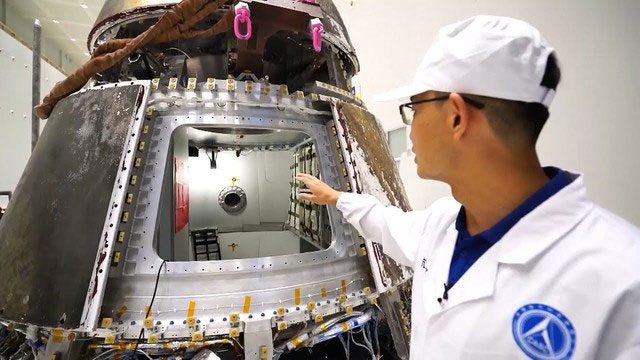
The new generation crewed spacecraft of China named Meng Zhou – Meng Chou. (Illustrative image).
The aerospace industry in China has steadily developed since the late 20th century. From its first crewed space mission to establishing its own space station, China has gradually realized its aerospace dreams.
Now, with the advent of this new generation spacecraft, China’s aerospace sector is poised to enter a new era. This spacecraft not only showcases China’s significant advancements in aerospace technology but also stands as a vital symbol of the country’s transformation from a “follower” to a “leader” in the aerospace industry.
Compared to the current Shenzhou spacecraft, the payload capacity of the new generation spacecraft has been significantly improved. The interior space of Meng Chou is more spacious, capable of accommodating more astronauts and experimental equipment. This not only expands the scale of crewed missions but also opens up the possibility of conducting longer and more complex space missions. In future manned lunar landing missions, the new generation spacecraft will be able to transport more scientific instruments and equipment, including astronauts, to support the construction of Moon bases and scientific research efforts. Meng Chou adopts a modular design, meaning its internal configuration can be adjusted according to the specific needs of missions.
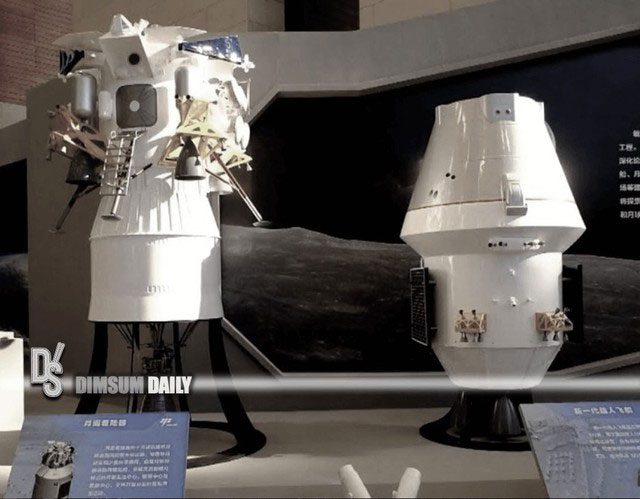
The payload capacity of the new generation spacecraft has been significantly improved. (Illustrative image).
For example, in crewed missions, the spacecraft can carry more life support systems and living supplies, while in cargo missions, the interior space can be utilized to load additional scientific experimental equipment and technical gear. Through this flexible design, the new generation spacecraft can better adapt to various mission requirements and maximize its payload capacity.
Secondly, the reusability feature is a highlight of the new generation spacecraft. Traditional spacecraft often need to be discarded or only partially recycled after mission completion, while the Meng Chou spacecraft utilizes advanced reusability technology to conduct multiple missions. This design significantly reduces the cost per mission and enhances the efficiency and economic benefits of the spacecraft. The thermal protection system of the new generation spacecraft employs the latest materials and technologies to withstand high temperatures and mechanical stresses generated during multiple uses.
At the same time, the propulsion system and structural components of the spacecraft have also been optimized to ensure that it continues to operate efficiently and reliably after multiple uses. Through these technological improvements, Meng Chou not only extends its service life but also reduces maintenance and operational costs, making it a more cost-effective spacecraft.
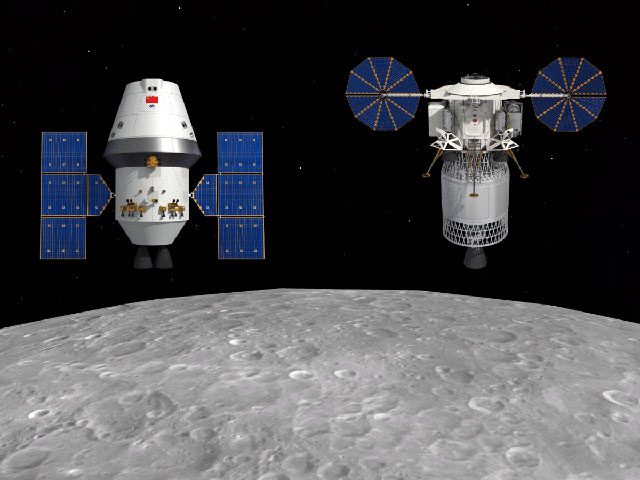
The intelligent system of the new generation spacecraft is a standout feature. (Illustrative image).
The intelligent system of the new generation spacecraft is one of its most significant highlights, particularly its performance in autonomous navigation and obstacle avoidance. While traditional spacecraft rely on guidance from ground control centers for navigation and obstacle avoidance, this approach not only increases mission complexity but also requires extensive support and coordination from the ground.
In contrast, the new generation spacecraft employs advanced artificial intelligence technology to navigate and avoid obstacles autonomously, allowing it to operate independently in complex space environments. Meng Chou is equipped with various advanced sensors, including radar, lidar, infrared sensors, and cameras. These sensors can monitor the environment surrounding the spacecraft in real-time and gather detailed spatial information.
By integrating multi-source data, the intelligent system of the spacecraft can analyze and identify obstacles in its flight path as well as their movement trajectories in real-time, enabling quick responses. This real-time analytical capability and environmental awareness allow the new generation spacecraft to respond more flexibly and effectively to various challenges when faced with complex and uncharted space environments.
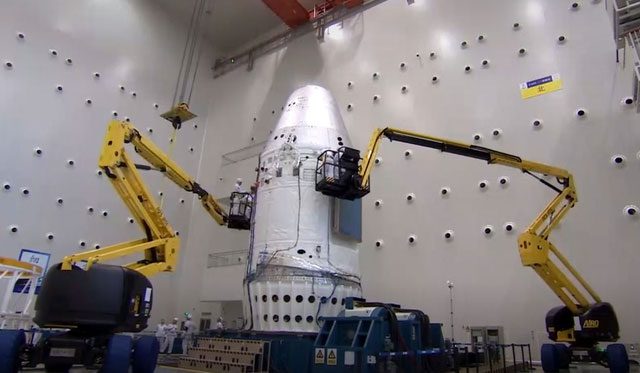
AI technology enables the spacecraft to navigate and avoid obstacles autonomously. (Illustrative image).
For instance, when a spacecraft is approaching a docking station near the space station, the intelligent system can automatically identify and avoid debris and other obstacles around the station to ensure a smooth docking process. Based on real-time environmental awareness and analysis, the intelligent system of the new generation spacecraft can autonomously plan optimal flight paths.
Whether it’s a mission in low Earth orbit, a lunar mission, or further into deep space, the system can automatically adjust the flight path based on mission requirements and real-time environmental changes. This feature not only enhances the spacecraft’s autonomy and safety but also reduces dependence on ground control.
In certain emergency situations, such as needing to avoid urgent obstacles or adjusting trajectories, the intelligent system of the spacecraft can make decisions and perform corresponding actions within milliseconds to ensure mission continuity.
In addition to autonomous navigation and obstacle avoidance, the intelligent system of the new generation spacecraft also possesses robust mission management capabilities. This system can automatically adjust the operational status of internal equipment based on specific mission needs, optimizing resource allocation and enhancing mission execution efficiency.
The new generation spacecraft integrates a large number of scientific instruments and life support systems. The intelligent task management system can monitor the status of these instruments in real-time and automatically adjust the operating parameters of each device based on the task processes and actual needs. For example, during a crewed lunar landing mission, the system can automatically adjust the temperature, humidity, and oxygen levels in the cabin based on the astronauts’ activities to provide the most comfortable environment.
Moreover, the intelligent system can carefully manage the spacecraft’s energy and fuel to ensure continuous supply during long-duration missions. By optimizing energy and fuel deployment, the spacecraft can maximize efficiency, extend mission duration, and broaden mission scope.
The intelligent task management system also features monitoring and feedback functions regarding mission status. The system can track the progress of the mission in real-time, record data at each critical node, and perform real-time assessments throughout the mission execution. When detecting anomalies or potential issues, the system immediately issues alerts and provides detailed fault analyses and handling suggestions. This function not only improves the safety and reliability of the mission but also provides valuable data support and decision-making references for ground control.

The new generation spacecraft integrates a large number of scientific instruments. (Illustrative image).
When necessary, the ground control system can perform interventions and adjustments based on the information provided by the intelligent system to ensure the successful completion of missions. Moreover, the intelligent system of the Dream Pearl spacecraft also has the capability to independently diagnose and fix errors. The space environment is very complex and prone to changes, so spacecraft are bound to encounter various faults during missions. The spacecraft can automatically detect and locate incidents as soon as they occur, while also executing corresponding repair measures to ensure mission continuity.
The intelligent system of Dream Pearl is equipped with various types of integrated sensors and monitoring devices, allowing it to monitor different key parameters of the spacecraft in real time. Upon detecting anomalies, the system immediately triggers a fault diagnosis program to analyze the cause of the incident and propose repair solutions.
Multi-level fault detection features allow the system to quickly identify and address various types of faults, ranging from minor equipment anomalies to major system-level failures. Through this effective detection mechanism, the spacecraft can continue normal operations in the shortest possible time, minimizing mission disruptions and risks. After completing fault detection and analysis, the intelligent system of the next-generation spacecraft can automatically carry out repair operations.
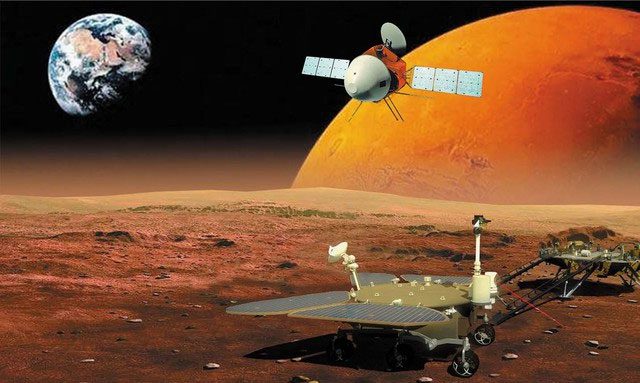
Intelligent fault repair capabilities enhance spacecraft reliability and safety. (Illustration).
For instance, if a certain device malfunctions, the system can automatically switch to a backup device to ensure the spacecraft operates normally. At the same time, the system can also adjust the operating mode of the device based on the type of fault to extend its lifespan. For more complex faults, the intelligent system can automatically generate maintenance instructions based on the fault status and guide astronauts in performing on-site maintenance.
This intelligent fault repair capability not only improves the reliability and safety of the spacecraft but also reduces the workload of astronauts, allowing them to focus more on scientific research and operational tasks. The intelligent system of Dream Pearl is not only capable of making decisions and controlling independently but also emphasizes collaboration between humans and machines to achieve seamless cooperation between the intelligent system and astronauts.
This human-machine collaboration model maximizes the advantages of the intelligent system while ensuring flexibility and reliability during mission execution. Throughout the mission, the intelligent system of the next-generation spacecraft can assist in real-time decision-making. The system will provide various solutions and suggestions for astronauts to choose from, allowing them to make decisions based on mission requirements and environmental changes.

The intelligent system of the next-generation spacecraft can assist in real-time decision-making. (Illustration).
This intelligent auxiliary decision-making mechanism not only enhances mission efficiency and safety but also improves the flexibility of astronauts’ operations. For example, when conducting complex scientific experiments, the intelligent system can provide detailed operating steps and precautionary measures to aid astronauts in completing experiments more accurately.
Simultaneously, the system can monitor the testing process in real time, promptly detecting and alerting to potential abnormalities, ensuring the testing process runs smoothly. The emergence of the next-generation spacecraft marks a new era of intelligence in China’s aerospace industry. It not only boasts significant advantages in payload capacity and reusability but also indicates the future direction of aerospace technology development with its super-intelligent systems. It is foreseeable that in the near future, the next-generation spacecraft will lead China’s aerospace sector into a broader universe and empower the human dream of space exploration.




















































